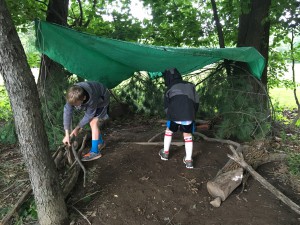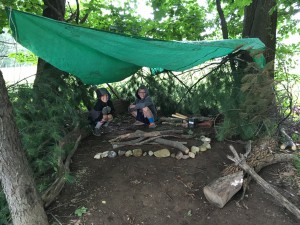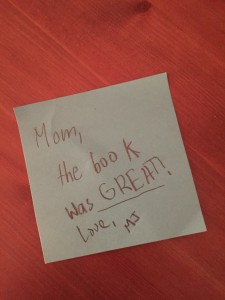I am training for a triathlon. That means I have to practice three different ways of racing: swimming, biking and running. Each one requires me to work on my form for that sport. But the form for each sport has lots of moving parts: arms, legs, head, neck, spine. When you’re practicing any of those, it’s hard to think about your entire form all at once. So I think about it parts. When I’m swimming, I’ll think about elbows one lap, or keeping my neck loose. When I’m biking I’ll work on relaxing my shoulders and leaning forward for a half mile at a time. When I’m running, I’ll work on my forward lean for 2 minutes, then knee lift for the next two.
The same goes for writing and for revising a manuscript.
It’s hard to think about all of it, all at once. So try breaking it into parts.
In May, I attended an agent workshop hosted by my local SCBWI chapter. I spent the most time with Vicki Selvaggio from the Jennifer de Chiara agency. In final presentation of the weekend, she suggested each of us go back through our manuscripts and read it over five times. Each time through, she offered a different focal point for us to consider. Because it’s hard to revise your manuscript and think about all the important pieces all at once.
Here are the five focal points she suggested for revising a manuscript:
- Make an X in the manuscript whenever you get bored, a character says the same thing more than once, you’re confused, or you see a tell vs. a show.
- Make an X if a scene, page or chapter doesn’t move the story forward, if it doesn’t end when the story is over, if there’s a main character change or if the theme isn’t clear.
- Make an X if it’s not written in a unique voice, if someone doesn’t have an important role, if they dialogue tags are too visible (“said” is just fine).
- Make an X if your story is missing sensory details, if the story feels like it’s in a void, if you haven’t mentioned how things look, sound, smell, taste, feel, if you can combine setting details with action.
- Make an X where you start paragraphs the same way, if you can avoid “-ing” verbs, if you can avoid double verbs, if you can remove adverbs, or other weak words.
Before you tackle this, she suggests letting the story sit at least a month. I’m well overdue for revising my manuscript, so I have to get started making x’s right now!











